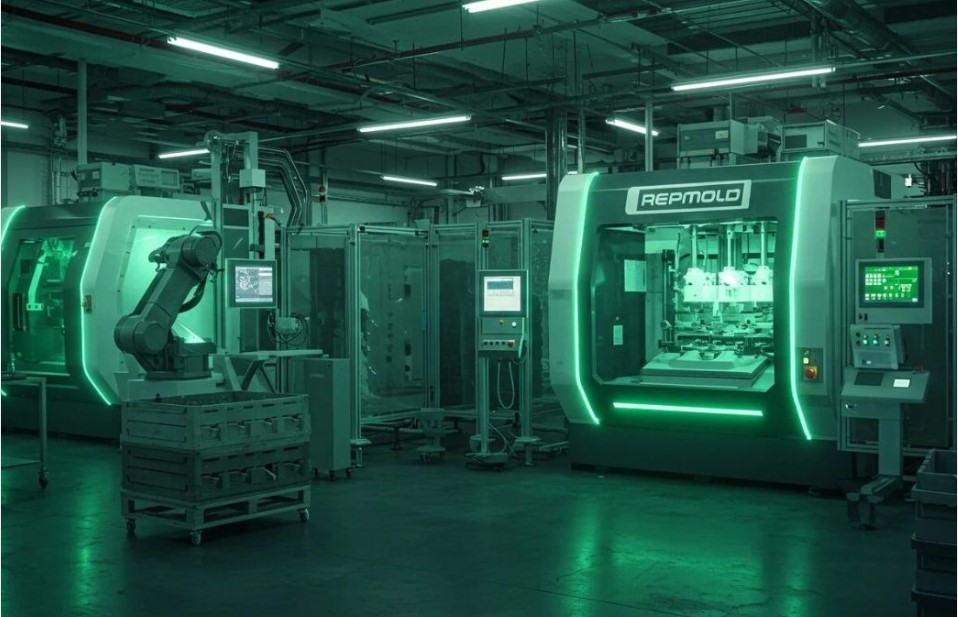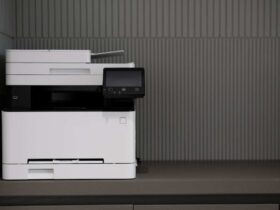In the world of mold making and casting, innovation is the key to improving efficiency, accuracy, and creativity. Among the many breakthroughs in molding technology, RepMold has emerged as a transformative solution. Whether you’re a professional in engineering, manufacturing, or simply a hobbyist looking to experiment, RepMold offers a world of possibilities. This article will dive into everything you need to know about RepMold, from its definition to its applications, benefits, and much more.
What is RepMold?
RepMold is an advanced molding material designed for creating precise replicas, prototypes, and intricate designs. It is typically made from either silicone or polyurethane, which give it excellent flexibility, durability, and the ability to capture the finest details. Due to its unique properties, RepMold is ideal for various industries, including art, engineering, medical applications, and consumer goods.
One of the key features of RepMold is its quick curing time, which accelerates project timelines and reduces waiting periods. This makes it especially useful for rapid prototyping or for industries where speed is crucial. Another significant advantage is the material’s reusability, ensuring that molds can be used multiple times without degradation, thus providing great value over time.
RepMold is the go-to solution for anyone looking to replicate complex designs with precision. Whether you need to create an exact copy of a part, prototype a new product, or cast artistic sculptures, RepMold ensures that your creations are as close to the original as possible.
The History of RepMold
The origins of RepMold date back to the early days of the manufacturing industry, where there was an increasing need for efficient, accurate, and cost-effective molding processes. As industries began to demand faster product development cycles and more complex designs, traditional molding methods struggled to keep up. This led to the development of RepMold, which provided a solution to these challenges.
Initially, RepMold was developed for rapid prototyping in industries like automotive and consumer goods. Its flexibility, combined with the ability to produce detailed replicas in short timeframes, quickly made it a staple in design and engineering fields. Over time, the material evolved, and improvements in its formulation enhanced its durability, versatility, and speed, making it a viable solution across many industries.
As the demand for precise, quick-turnaround prototyping grew, so did the popularity of RepMold. Today, it is used worldwide by professionals in fields such as art, medicine, manufacturing, and construction.
How Does RepMold Work?
The process of using RepMold involves a few simple steps that combine artistry with technology. The basic procedure starts with pouring a specially formulated RepMold material into a mold cavity. This material is typically in liquid form and, once poured, it begins to cure (harden) into a solid shape.
Step-by-Step Process:
- Preparation: The first step involves preparing the model or item you want to replicate. This item is placed in a mold box, and a release agent is often applied to ensure that the material doesn’t stick to the original object.
- Mixing: RepMold comes as a two-part system (resin and hardener). The components are carefully mixed in the correct ratio to ensure that the material cures properly.
- Pouring: The mixed RepMold material is poured over the model, covering it entirely. This material flows into all the intricate details of the original design, ensuring a perfect copy.
- Curing: After pouring, the mold is left to cure at room temperature or with gentle heat. The curing time is relatively quick, often ranging from 30 minutes to a few hours, depending on the material.
- Demolding: Once cured, the mold is carefully removed, revealing an exact replica of the original item. The final mold can be used for casting parts or prototypes.
The flexibility and detailed capture ability of RepMold make it ideal for complex designs, including those with fine details or undercuts.
Benefits of Using RepMold
1. Flexibility and Precision
RepMold’s ability to capture fine details sets it apart from other molding materials. This precision makes it ideal for industries that require exact replicas, such as medical prosthetics, art reproductions, and automotive engineering.
2. Quick Curing Time
The quick curing time of RepMold allows projects to move forward without long delays. This is particularly advantageous for industries relying on rapid prototyping and short turnaround times.
3. Durability and Reusability
RepMold molds are highly durable and can be reused multiple times without significant degradation. This feature makes it an economical and environmentally friendly choice, as fewer molds need to be made over time.
4. Cost-Effective
Compared to traditional molding techniques that may require more expensive equipment or longer manufacturing times, RepMold provides a more cost-effective solution for both small-scale projects and large industrial applications.
5. Versatility
RepMold can be used with a wide range of materials, including metals, plastics, resins, and more. This versatility makes it suitable for a variety of industries, including automotive, art, manufacturing, medical devices, and even DIY projects.
Common Uses of RepMold
1. Art and Sculpture
Artists and sculptors often turn to RepMold to replicate intricate designs or create custom sculptures. The material’s ability to capture delicate details, such as texture and shape, makes it an invaluable tool in artistic projects. RepMold is especially popular for creating lifecasts and other art pieces that require high precision.
2. Manufacturing and Prototyping
In manufacturing, RepMold is used to create accurate prototypes and molds for production parts. Rapid prototyping is essential in industries like automotive and electronics, where time-to-market is critical. RepMold allows engineers to create precise models of components to test functionality and design before committing to large-scale production.
3. Medical Applications
RepMold’s precision is highly valued in the medical field. It is used to create molds for prosthetics, dental appliances, and even surgical tools. The material’s flexibility and accuracy ensure that these medical devices fit comfortably and function as intended.
4. Consumer Goods
Many consumer goods manufacturers use RepMold to replicate parts and components for testing and production. Whether it’s a small appliance part or a decorative item, RepMold provides a reliable and efficient molding solution.
5. DIY and Hobby Projects
RepMold is also popular among hobbyists and DIY enthusiasts. Whether it’s crafting custom figurines, repairing household items, or creating personalized gifts, RepMold is easy to use and allows for creative exploration.
Tips for a Successful RepMold Project
1. Use Quality Materials
For the best results, ensure you use high-quality RepMold materials. This will ensure that the molds are durable and that the final product is accurate and detailed.
2. Work in a Clean Environment
Dust and debris can affect the curing process and impact the quality of your mold. Make sure your work area is clean and free of contaminants.
3. Accurate Mixing
Follow the mixing instructions closely. The resin-to-hardener ratio is crucial for optimal curing, so be sure to measure carefully.
4. Patience During Curing
Don’t rush the curing process. While RepMold cures relatively quickly, allowing it to set completely before handling will prevent imperfections in the final mold.
5. Test First
Conduct a small-scale test with a simple model to familiarize yourself with the material and the process before working on larger projects. This allows you to identify any potential issues without wasting resources.
Future Developments in the World of RepMold
RepMold continues to evolve, and the future holds exciting possibilities. As technology advances, new formulations of RepMold are being developed to offer even greater flexibility, strength, and resistance to wear and tear. In particular, the development of eco-friendly and sustainable molding materials is a focus for the future. As industries strive for greener practices, RepMold is likely to follow suit with more sustainable alternatives.
Moreover, advancements in artificial intelligence and predictive modeling may play a role in enhancing the design and prototyping process, making it even easier to create complex molds with optimized efficiency.
Conclusion
RepMold is an essential material for anyone working with molds and prototypes. Its flexibility, quick curing time, and ability to capture fine details make it a valuable tool across various industries. Whether you are an artist, engineer, hobbyist, or healthcare professional, RepMold offers a versatile and efficient solution for creating accurate replicas and prototypes. As technology advances, we can expect even more innovative applications of this incredible material.
By understanding how RepMold works and its many benefits, you can unlock new possibilities in your own projects, streamline your production processes, and create high-quality products and designs with ease.
FAQs
1. Can RepMold be used for large-scale production?
Yes, RepMold is used for both small-scale and large-scale production, particularly for prototyping, but it is also suitable for creating molds for mass production when needed.
2. Is RepMold safe to use?
RepMold materials are generally safe to use when handled according to the manufacturer’s guidelines. Always ensure that you work in a well-ventilated area and use the proper safety gear when necessary.
3. How long does RepMold take to cure?
RepMold typically cures within a few hours, though the exact time can vary depending on the material and the conditions in which it is used.
4. Can RepMold be reused?
Yes, RepMold is highly durable and reusable, making it an excellent choice for projects that require multiple casts or molds.
For more Visit VintagePosts















Leave a Reply